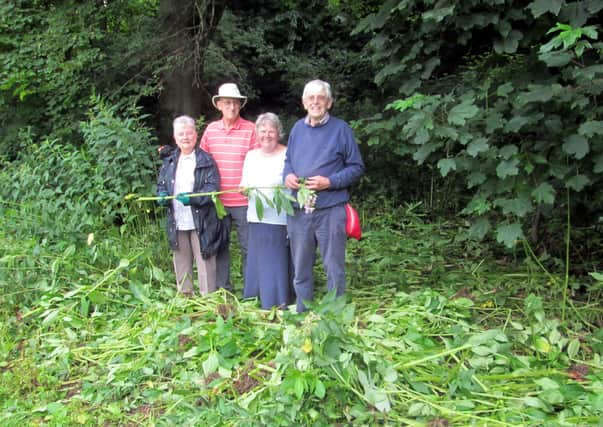Bid to stop Himalayan Balsam spread


Concerns had grown in the group about the growth of the plant, which reaches over seven feet in height in the summer, but then dies back in winter, leaving the area susceptible to erosion.
Society Vice Chairman, Peter Catton, explained: “We noticed in 2020 that there were large areas of Himalyan Balsam flowering and seeding along the River Wharfe riverbank on the Ings and on Scaur Bank and decide that this year we would organise a Balsam Bashing event.
Advertisement
Hide AdAdvertisement
Hide Ad“We cleared scattered outbreaks on the Ings and tackled a large infestation on Scaur Bank.
“We concluded that the area of growth on Scaur Bank was so bad that it would be best tackled using a strimmer and Coun Harry Chapman will be raising this with Wetherby Town Council.
“We did not have time to remove all the outbreaks on the Ings and will be having another “Bashing” in the next few weeks.”
He added: “Himalayan Balsam (Impatiens glandulifera) is an invasive species related to Busy Lizzies but reaches well over seven feet in height.
Advertisement
Hide AdAdvertisement
Hide Ad“It grows in a dense cluster and effects the environment by suppressing the growth of native plants and starving them of sunlight and minerals.
“When Himalayan Balsam plants die back in autumn, it leaves entire stretches of riverbanks bare of vegetation and susceptible to erosion.”
It is an annual and spreads by ripe seedpods shooting their seeds up to seven metres (22ft) away. Each plant can produce up to 800 seeds.
“It is almost impossible to eliminate Himalayan Balsam entirely but preventing the plant from seeding stops its spread,” added Mr Catton.
“The most effective way to do this is by pulling the plants up before they seed.